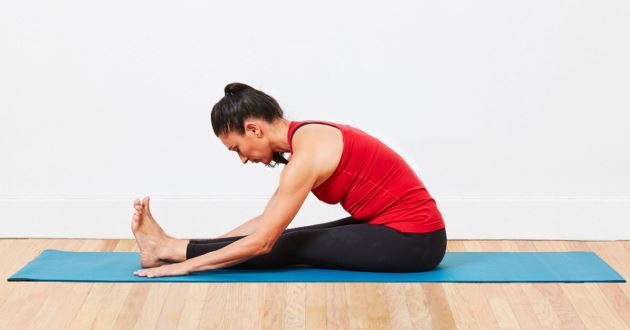Is your foam roller your best friend? Have you tried countless stretches but you still have tight hamstrings and calves? Why are your hamstrings so tight? Can dehydration cause tight hamstrings? How do you loosen your hamstrings? Let’s dig in.
Tight Hamstrings and Calves: Why Are Your Hamstrings So Tight?
Tight hamstring and calves can be very painful and arise from different sources which include:
Overuse
Running, sports, strenuous activity, and strenuous hard labor can all cause tight hamstrings and calves (1). This can cause muscle strain where the muscle fibers are stretched or partially torn with resultant muscle tightness (c).
Medications
Statin medications used to treat elevated cholesterol cause muscle tightness and pain (2).
Muscle or Tendon Injury
Tears in the muscle can cause swelling, decreased blood flow, and contraction with resultant muscle tightness. Inflammation or degeneration of the tendon of a given muscle can also cause muscle tightness. Symptoms are typically limited to the affected side.
Structural Problems
We live in a challenging ergonomic environment with prolonged periods of sitting with a focus on monitors and cellular screens. This can result in a large number of problems which include rounding of the shoulders, head forward posture, shoulder elevation or depression, lack of spinal and pelvic alignment, spinal rotation, muscle imbalance and lower extremity muscle weakness (3). This, in turn, impacts the way sit, stand and move. These abnormal postures can cause muscles to take on additional work that they were not intended for. These postures, misalignment and compensating muscles can result in hamstring and calf tightness. For example, if your pelvis is flexed forward due prolonged sitting this can pull on the hamstrings which over time can make them chronically tight.
Low Back Nerve Injury
The human body is comprised of multiple moving parts which are all connected. The spinal nerves transmit signals from your brain that tell your muscles to contract. We know that it’s usually the S1 and S2 nerves in the spine that supply the calf muscle. The L5, S1 and S2 nerves in the low back supply the hamstring muscles. If the nerve signal from the low back is damaged the hamstrings and calf muscles do not contract. Rather they get smaller as is the case in a spinal cord injury. On the other hand, if the nerve is irritated and the muscle gets a partial or incomplete signal they become chronically tight. Disc protrusion, disc herniations, slipped discs, loose ligaments and small joint overgrowth are some of the common causes of spinal nerve irritation. Chronic hamstring and calf tightness oftentimes is the first warning sign of a problem in the lumbar spine as many patients have no low back pain. To better understand the connection between spinal nerve irritation and tight hamstrings and calves please watch the video below.
Can Dehydration Cause Tight Hamstrings?
Dehydration can cause depletion of essential electrolytes which compromises nerve signals to muscles leading to muscle cramping and tightness (4).
How Do You Loosen Your Hamstrings?
Treatment depends upon the exact cause of the tightness. In many cases, rest after strenuous exercise or work will relieve the tightness. Medications should never be discontinued without consulting your physician first. Muscle tears and tendon disorders can be diagnosed with ultrasound or MRI and physical therapy is the first-line treatment in mild to moderate cases. Structural issues can be addressed with a functional physical therapist or an Interventional Orthopedic physician. If you have persistent hamstring and calf tightness which has not responded to conservative therapy and stretching, you may have an irritated spinal nerve root. In fact, your chronically tight hamstrings may be a warning sign that your low back has a problem. Surgery is an option (5) which should be avoided due to the complications and poor outcomes.
The Centeno-Schultz Clinic has extensive experience in the treatment of tight hamstrings and calves with both PRP and bone marrow-derived stem cells. We acknowledge that is it much better to treat the issue while they are small and manageable as opposed to waiting when the injury may be more advanced. For patients who want to stay at the top of their game, we have a Pro-Active program. The program provides practical advice on understanding early warning signs such as chronically tight hamstrings and actions to maintain peak performance. To download the free book click here.
In Conclusion
Tight hamstrings and calves are common and can arise from many sources. Hamstring stretches are not always the best solution as they may only provide temporary relief and are not addressing the underlying problem. Chronically tight hamstrings may feel like a leg problem but is usually a warning sign that there is a back problem. Surgery should be avoided. Treating the spinal nerve irritation is critical to staying active and preventing further damage such as muscle and tendon tears.
1.Decoster LC, Scanlon RL, Horn KD, Cleland J. Standing and Supine Hamstring Stretching Are Equally Effective. J Athl Train. 2004;39(4):330-4.
2.Stroes ES, Thompson PD, Corsini A, et al. Statin-associated muscle symptoms: impact on statin therapy-European Atherosclerosis Society Consensus Panel Statement on Assessment, Aetiology and Management. Eur Heart J. 2015;36(17):1012-22.DOI: 10.1093/eurheartj/ehv043.
3.Opar DA, Williams MD, Shield AJ. Hamstring strain injuries: factors that lead to injury and re-injury. Sports Med. 2012;42(3):209-26.DOI: 10.2165/11594800-000000000-00000
4.Risk factors for hamstring muscle strain injury in sport: a systematic review and meta-analysis.
5. Anglès FG, Manubens XB, Anglès FC. A surgical technique for lengthening tight hamstring muscles in patients with low back pain. Int Orthop. 1997;21(1):52-3. doi: 10.1007/s002640050117.

